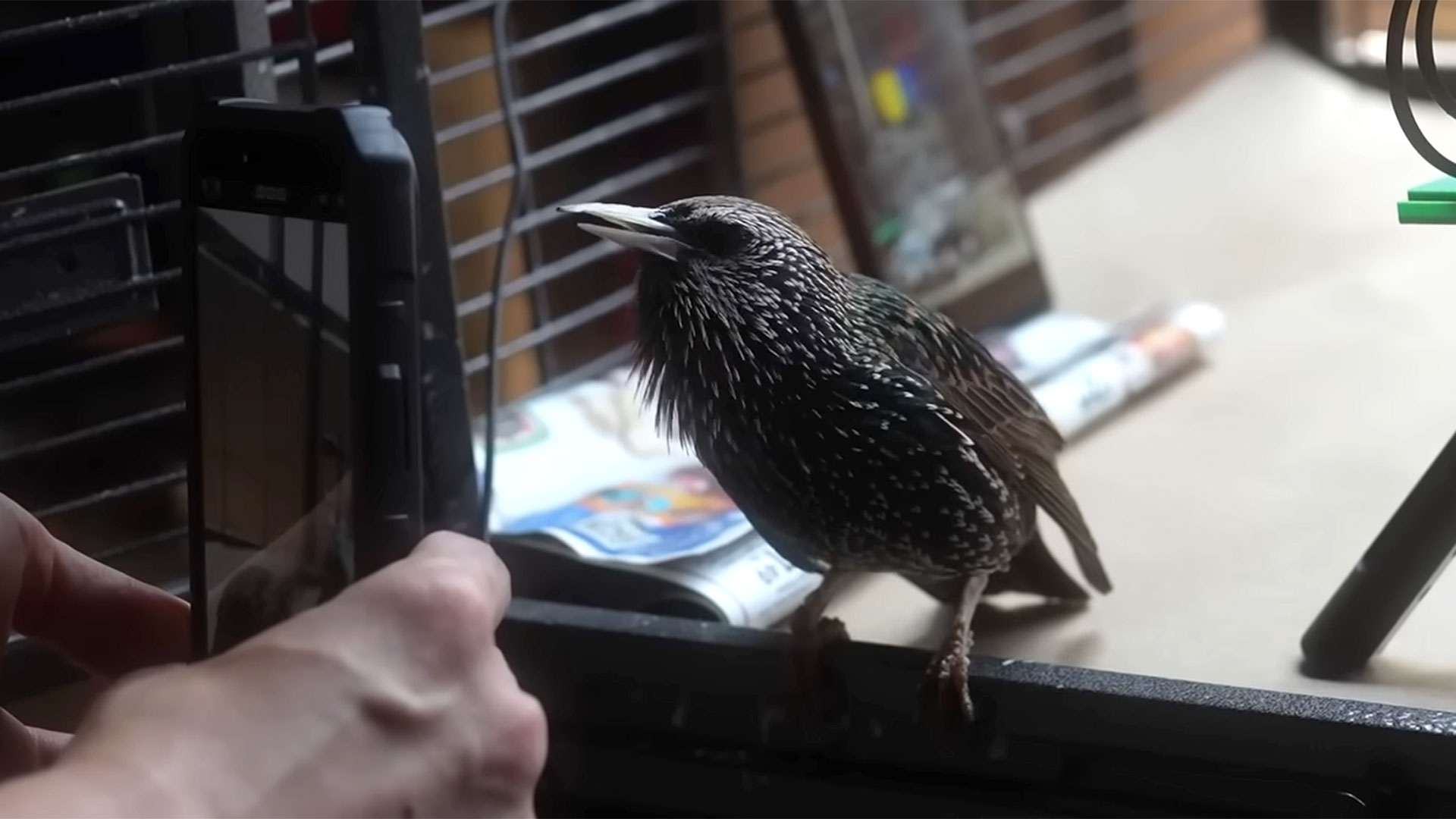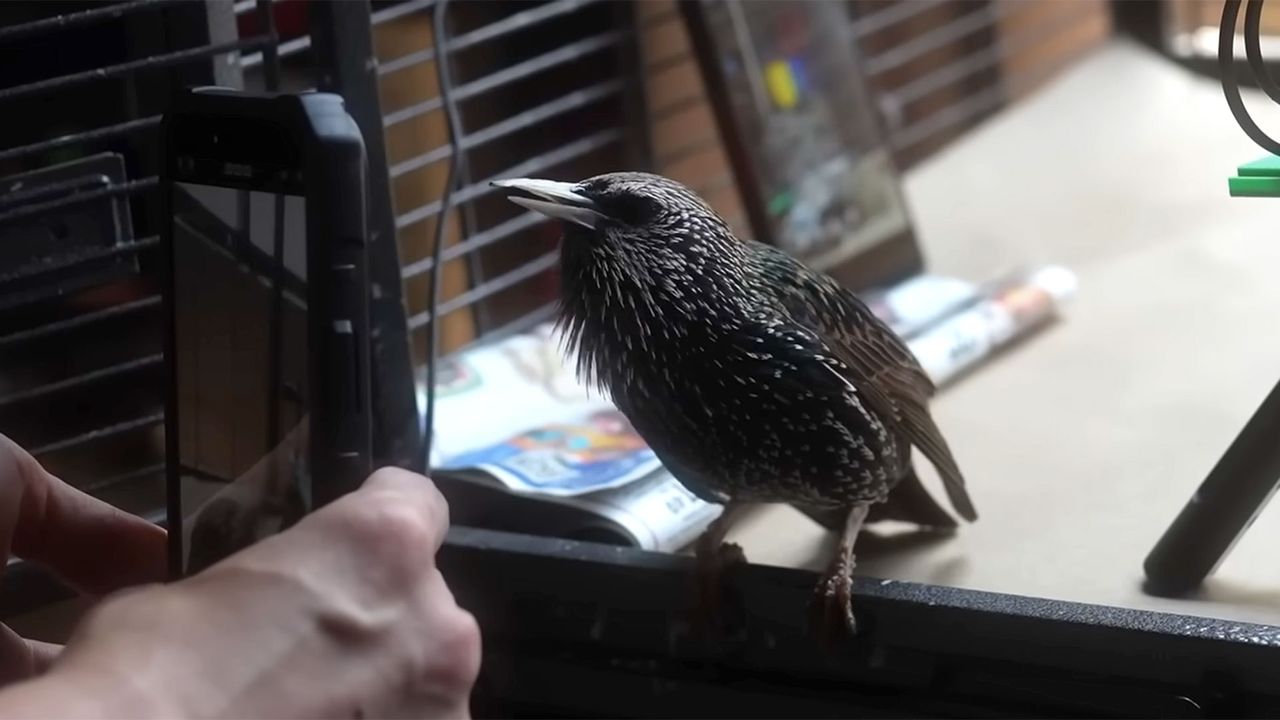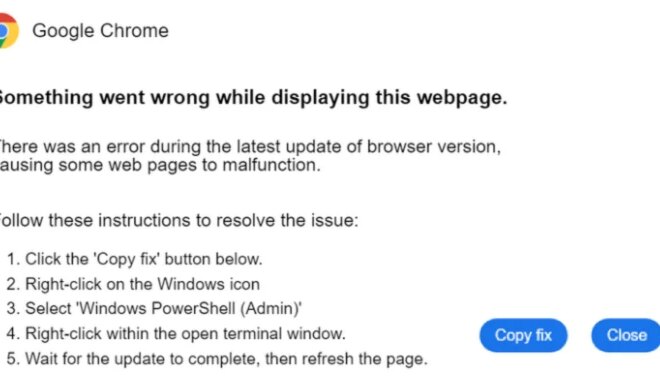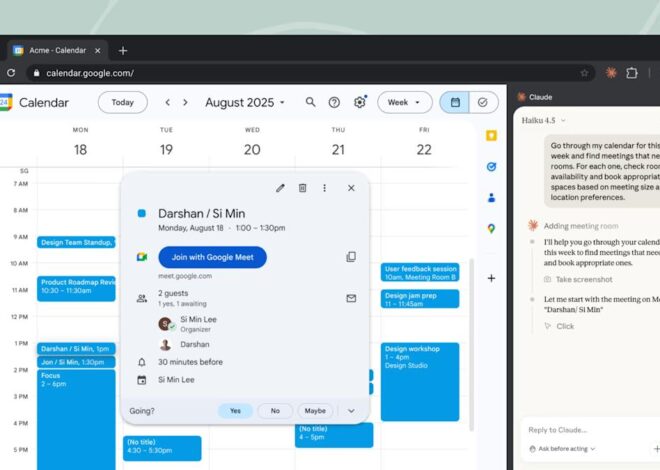
Yes, you can store data on a bird — enthusiast converts PNG to bird-shaped waveform, teaches young starling to recall file at up to 2MB/s

A music and science lover has revealed that some birds can store and retrieve digital data. Specifically, he converted a PNG sketch of a bird into an audio waveform, then tried to embed it in the song memory of a young starling, ready for later retrieval as an image. Benn Jordan made a video of this feat, sharing it on YouTube, and according to his calculations, the bird-based data transfer system could be capable of around 2 MB/s data speeds. Excuse Jordan (and us, as we are new to bird-based data transfer performance), but there are definitely a few caveats behind that speed claim.
The segment of the video with the playback and recording of the bird drawing data begins around 17 minutes into the video.
During the introductory segment of the video, we learn about some of the background considerations of this experiment. For example, Jordan outlines why he didn’t use the well-known mimicry skills of a parrot for this PNG data storage and retrieval test.
To cut a long story short, songbirds have some of the best-developed vocal abilities in the animal world, so they were the best choice. A particular feature among songbirds is the syrinx, located at the junction of the trachea and bronchi. This can be tuned by independently controlled muscle groups to control pitch and speed for extraordinary vocal gymnastics. Due to the bilateral structure of the syrinx, even phase and wave interference effects are possible.
A special starling
Last but not least, as far as the backstory goes, is the tale of the special starling you will see in the video and the images here. This bird left the nest early and was found on the roadside as a baby. Its abandoned situation was thought to be due to the stress of its home being next to a busy train track.
Young songbirds learn their calls by imitation, so could potentially be viewed as ‘blank canvases’ for archiving sounds. This special starling, reared by humans, has been even more receptive to reproducing ‘alien’ audio waveforms – like camera shutters and distant human speech with reverb effects.
Uploading to the bird
Around 17 minutes in, Jordan begins the attempt to store a drawing of a bird in the starling’s song memory. From the video, it seems like he created a simple PNG image of a bird, a basic line drawing. Jordan then put this shape into a spectral synthesizer, turning it into a waveform. As such, he could audibly ‘play an image’ to the starling.
Jordan spent the recording session playing the sound to the starling, seemingly without noticing that he’d achieved his goal. When he got home and rummaged through “many gigabytes” of audio from the session, something caught his eye.
There was a small waveform that caught his attention, and zooming in, he discovered it was the bird image, but visible much later into the session time than when he was replaying the spectrogram sample from his smartphone to the starling. Which could only mean one thing. It was a bird image produced by the bird itself…
Now, Jordan goes into some technical details about the audio and image data files, and follows up with some back-of-the-napkin math that would only interest the most data-absorbed audiophiles. “This little bird successfully learned and emulated the sound in the exact same frequency range that he heard it, effectively transferring about 176 kilobytes of uncompressed information,” mused the music and science enthusiast. “Hypothetically, if this were an audible file transfer protocol that used a 10:1 data compression ratio, that’s nearly 2 megabytes of information per second. While there are a lot of caveats and limitations there, the fact that you could set up a speaker in your yard and conceivably store any amount of data in song birds is crazy.”
It is indeed crazy that you can effectively ‘scan an image’ then reproduce it using birdsong, but it seems to have just happened. No doubt, an Ostrich that can run Doom is just around the corner.
Follow Tom’s Hardware on Google News to get our up-to-date news, analysis, and reviews in your feeds. Make sure to click the Follow button.







